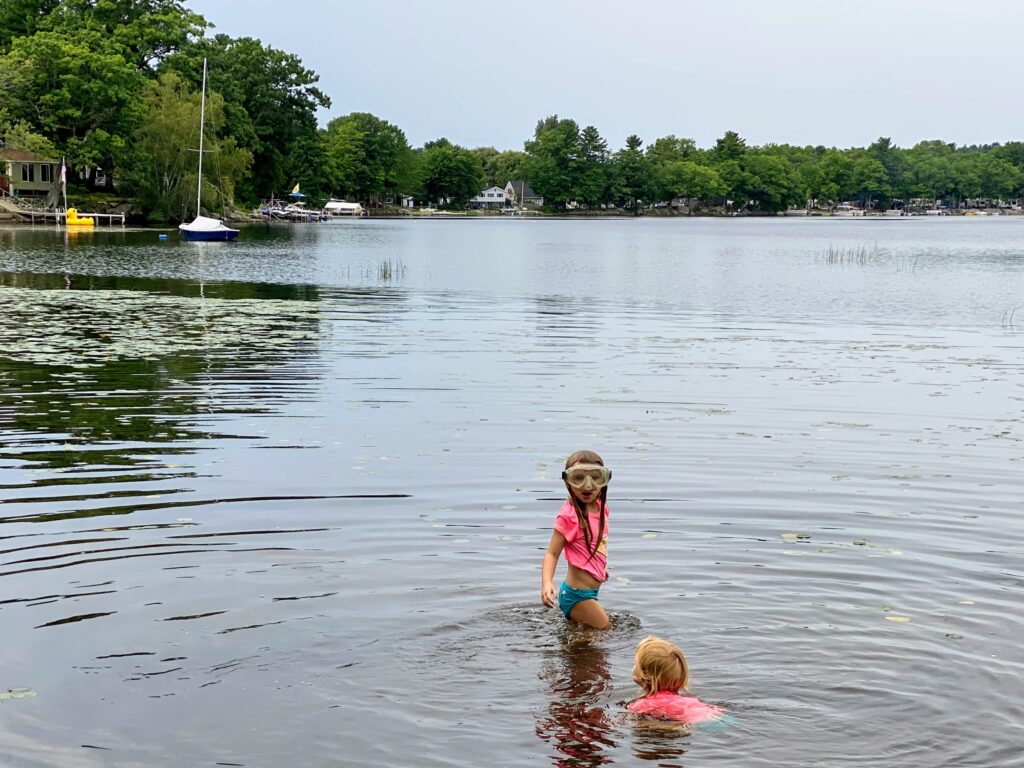by Dana Little
The quick and simple answers to this question is no and maybe. Water from Taylor Pond is not considered safe to drink without treatment. The water is, however, safe for swimming but with some concerns.

Last summer the TPA board raised these questions about safety. Bill Turner offered to test some water samples as he had the expertise and an available boat. We only looked at Escherichia coli, abbreviated as E. coli. This bacterium is found in the intestines of wild animals, pets, and humans. The presence of E. coli in water indicates contamination with fecal matter. Because we have many wild birds, beavers, muskrats, and other animals that live on and around Taylor Pond we would expect to find some E. Coli. We are fortunate that most houses around Taylor Pond tie into Auburn’s sewer system and only a few homes around the pond rely on septic systems. Therefore, we are not likely to have significant amounts of E. coli due to human waste. The concern with the presence of E. coli is that if it is human in origin, other bacteria, viruses or parasites could cause disease.
Lake water is generally not considered safe to drink without at least chlorination to kill the bacteria. For drinking water, no level of E. coli is considered acceptable. For swimming, levels up to 88 (colonies of E. coli/100 milliliters) should not be exceeded in any one sample and no more than 47 on average of three samples over a 60-day period.
When Bill Turner performed testing in 2022, he found that E. coli levels ranged from 5 to 114. Of five samples taken, none were free of E. coli. He tested levels at the outlet on two occasions. We thought that the outlet would have an average amount of E. coli because it represented a mixture of all the water in the pond. On the two occasions he measured it, the numbers came back at 72 and 55, both below the acceptable level of 88 but above the 60-day average of 47 considered safe for swimming. On a private beach he obtained levels that ranged from 15 to 114. One measurement in the middle of the pond came back at the low of 5.
It is concerning that levels of E. coli exceed maximum levels recommended for safe swimming in certain areas at certain times last year. The drought and associated low water levels may have been an important factor. It is reassuring that most homes are connected to the city’s sewer, likely indicating that most of the E. coli found is wildlife in origin and not a hazard to humans. Anecdotally, I swim almost daily in Taylor Pond during the summer without any ill effects.
You can take certain actions to decrease your risk of disease. If you have a septic system, have an expert check to make sure it is functioning properly, especially if it is an aging system. Avoid attracting ducks, geese or other wildlife that will leave their feces on your lawn or waterfront. Finally, if you want to be certain that the water is safe, you can test the water in your swimming area. A&L Laboratory, 155 Center Street in Auburn performed the E. coli testing undertaken by TPA and will test your water samples for a fee. You can pick up a water quality test kit at the lab or order online. As with testing well water, they can test for various bacteria/minerals and the price will vary according to the tests you request.